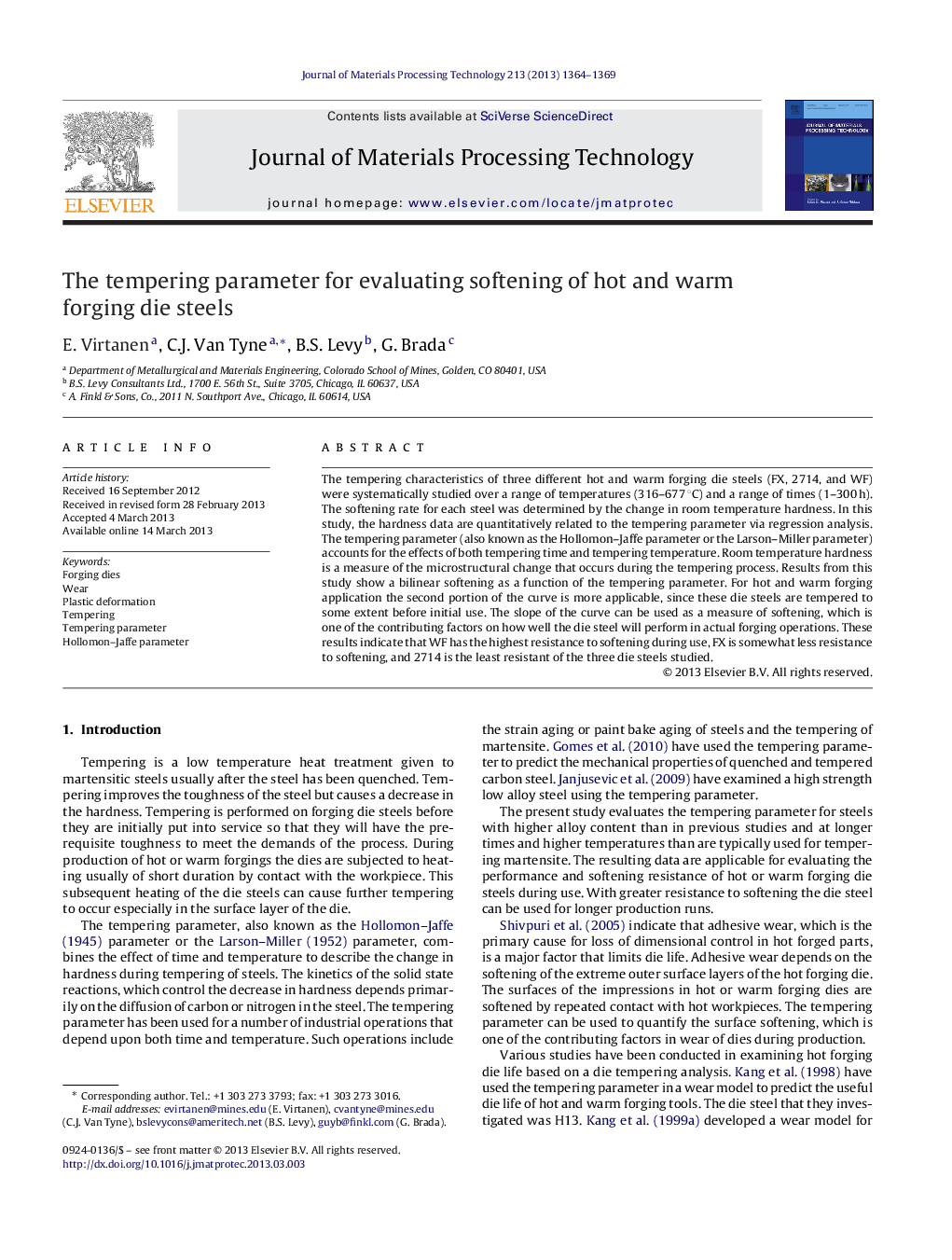| Article ID | Journal | Published Year | Pages | File Type |
|---|---|---|---|---|
| 10417698 | Journal of Materials Processing Technology | 2013 | 6 Pages |
Abstract
The tempering characteristics of three different hot and warm forging die steels (FX, 2714, and WF) were systematically studied over a range of temperatures (316-677 °C) and a range of times (1-300 h). The softening rate for each steel was determined by the change in room temperature hardness. In this study, the hardness data are quantitatively related to the tempering parameter via regression analysis. The tempering parameter (also known as the Hollomon-Jaffe parameter or the Larson-Miller parameter) accounts for the effects of both tempering time and tempering temperature. Room temperature hardness is a measure of the microstructural change that occurs during the tempering process. Results from this study show a bilinear softening as a function of the tempering parameter. For hot and warm forging application the second portion of the curve is more applicable, since these die steels are tempered to some extent before initial use. The slope of the curve can be used as a measure of softening, which is one of the contributing factors on how well the die steel will perform in actual forging operations. These results indicate that WF has the highest resistance to softening during use, FX is somewhat less resistance to softening, and 2714 is the least resistant of the three die steels studied.
Keywords
Related Topics
Physical Sciences and Engineering
Engineering
Industrial and Manufacturing Engineering
Authors
E. Virtanen, C.J. Van Tyne, B.S. Levy, G. Brada,
